12 Interesting Blue Jay Facts for Kids 2024
If you’ve ever encountered a raucous, angry blue bird in a park, it was probably a blue jay you came across. These birds are usually found in woodlands and suburban areas in most of North America. They have white or gray necks and bellies with vivid blue backs. Blue jays have a tuft of blue feathers called a crest on their heads.
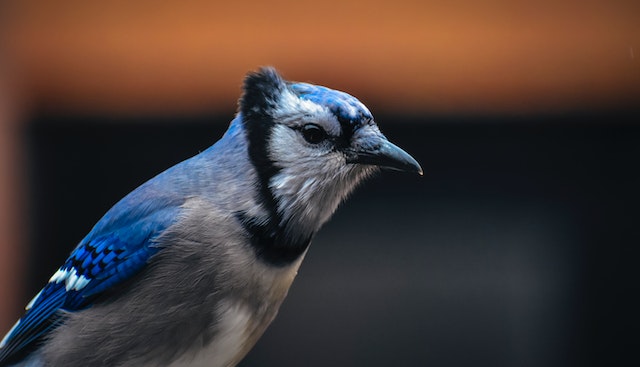
The crest of a blue jay resembles a tiny blue birthday hat. The loud jaying sound they frequently make is where they get their names! They are songbirds and have a reputation for making a lot of noise.
Also Read: Eagle Facts
This article will look closely at some fascinating facts about blue jays.
12 Fun blue jay facts for kids
They are small birds found in North America.
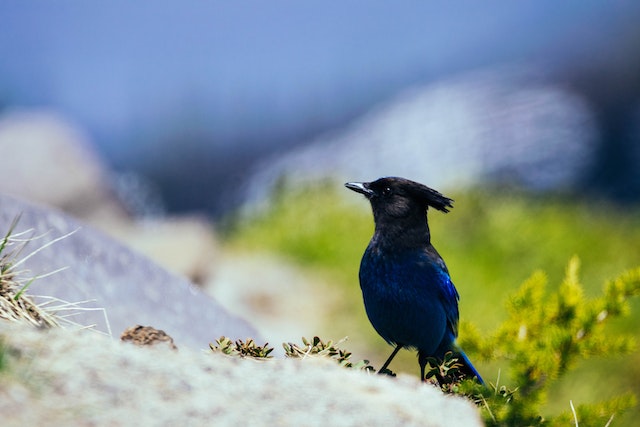
The Blue Jay is a large, blue-colored songbird native to North America. They can be found in all types of forests, but they are more prevalent near oak trees at the margins of the woods than in the interior. The oldest Blue Jay recorded lived to be 17 and six months old. In the forest, they live an average of 7 years. They weigh 2.5 to 3.5 ounces and can grow to be 9 to 12 inches long. Compared to females, males are slightly bigger.
Blue jays are omnivores.
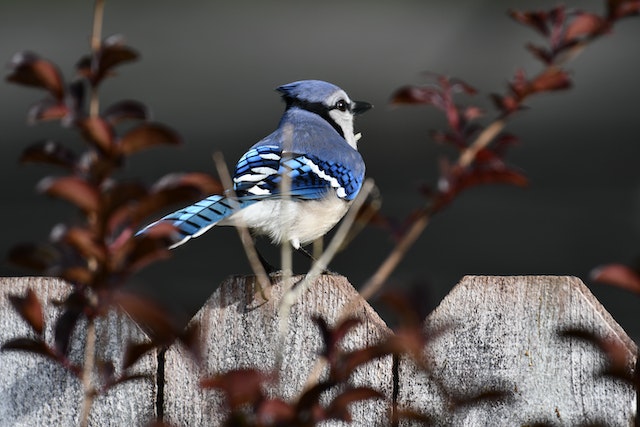
Blue jays are omnivores, meaning they consume plants, animals, nuts, and seeds. They will consume acorns, seeds, fruits, insects, frogs, mice, eggs, and even smaller songbirds in the nest. These birds are known to bury some of the food they have collected to consume later. They frequently retain a cache or a secret location stocked with seeds and nuts. Blue jays use their powerful black bills to crack open nuts, acorns, and corn and eat grains, seeds, and insects, including beetles, grasshoppers, and caterpillars.
Also Read: Bald Eagle Facts
They are keen observers of sound.
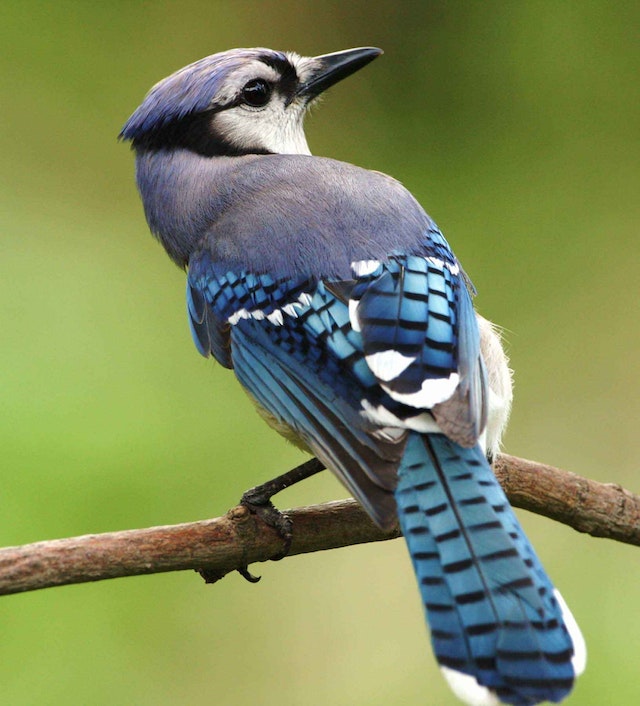
Blue jays are capable of picking up on human speech. It can often be challenging to distinguish between blue jays and local hawks because they can mimic their calls well. Their voices vary from bird to bird, as is typical for jays, but the “alarm call,” a harsh, almost gull-like scream, is the sound most people associate with them. In addition, the bird makes a high-pitched layer-layer call that gets faster as it continues to get excited. Groups of blue jays use these cries to gather and chase away hawks and other predators from their nests.
The blue jay’s crest is one of their most recognizable physical features.
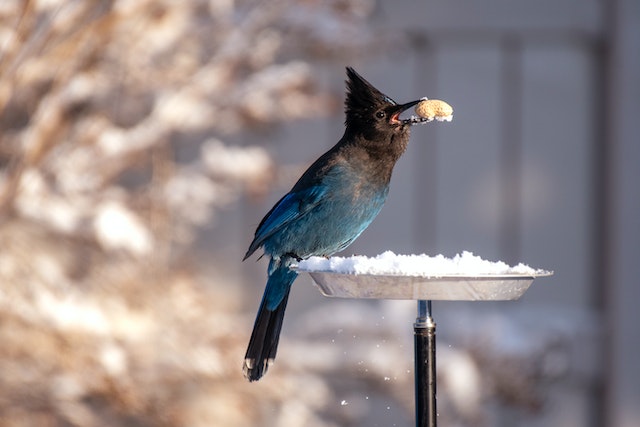
On the top of the head is a feathered crown that the bird can raise or lower depending on how it feels. The crest could be fully elevated when it is angry or aroused. When frightened, the brush-like crest extends outward. The crest is flattened to the head when the bird is resting or foraging alongside other jays.
Their behavior can sometimes be aggressive.
Blue jays are occasionally aggressive toward other birds and may chase them away from their food sources. This can also benefit other species because it may drive hawks and owls, who occasionally prey on jays and scream if one enters their territory. Additionally, when hawks or other threats are nearby, it has been known to make a “warning call.” Smaller birds frequently recognize this call and take cover as a result. Additionally, it has a history of attacking people who approach its nest, and if an owl roosts nearby during the day, the blue jay attacks it until it finds a new place to roost. When flying in broad spaces, the blue jay moves sluggishly and is an easy target for hawks and owls. It flies at a slow speed while maintaining a level body and tail.
Also Read: Chicken Hawk Bird Facts
They are social birds that live in woodlands.
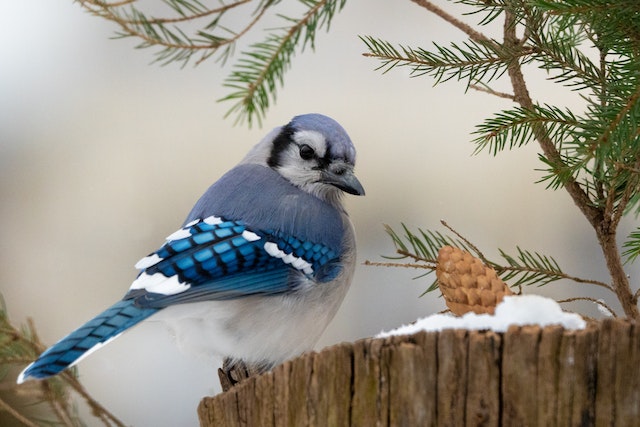
Blue jays have highly close-knit families and reside in tiny flocks. These more or less social birds are frequently seen in pairs or family groups in residential areas where backyard bird feeders provide food. Thick, deciduous woodlands in the Eastern United States and Southern Canada are the habitat of blue jays. Some of these birds spend winter in the Northern United States and along Canada’s Pacific coast. They stay away from deep forests and favor mixed woodlands.
Blue jays live and work together as families for the first stage of a nestling’s life.
Their mating season begins in March and lasts till mid-July. Although they prefer evergreen trees, any tree or substantial shrub may be used for nesting. They typically build their nest three to ten meters in the air.
When an outside blue jay enters a couple’s private territory, the blue jay female emits a different sound called the rattling sound to inform their group. The call’s sound pattern is a sequence of crisp clicks that begin and conclude each click. Immature blue jay offspring cry out and beg for food when their parents aren’t nearby.
They are monogamous creatures that live in nests.
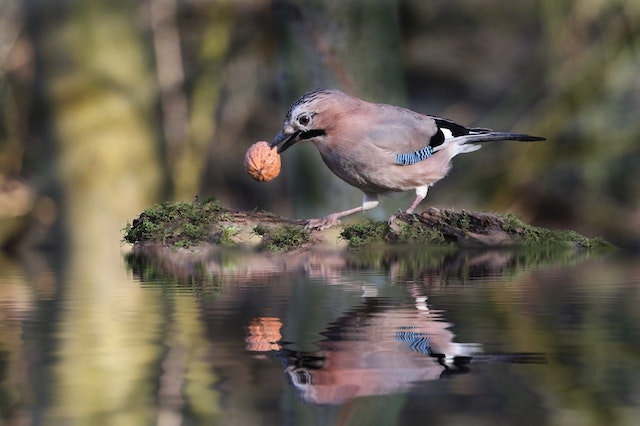
Their cup-shaped nests are constructed with twigs, tiny roots, strips of bark, moss, other plant material, cloth, paper, and feathers, and occasionally mud is also used to fill the cup. Most monogamous blue jay pairs stay together for life. While both sexes help build the nest and care for the young, only the female is responsible for raising them. Usually, 4-5 eggs are laid, taking 16–18 days to hatch.
Also Read: 8 Interesting Facts About Red-Tailed Hawk
Blue jays take a couple of months to become fully independent.
Three days after the blue jay finishes brooding, some young birds begin to stray. These young blue jays, commonly known as nestlings, frequently cry but aren’t given food until their parents return. The blue jays sometimes need a month or two to develop their independence and stop depending entirely or partially on their parents for feeding. Usually, they build their own nest when they do. Infants begin when they are only 17 to 21 days old. If they need to locate a spot away from the turmoil, they may even choose to leave the nest before then.
They are very intelligent.
Blue jays are intelligent birds. When someone places food down, they will wait and watch, and as soon as the person leaves, they will emerge from concealment to steal it. Jays will observe someone sowing seeds and then dig up and eat the seeds, just like crows do. Jays aggressively pursue rival birds from a feeder in search of a simpler meal. The blue jay has a reputation for robbing nests of other birds and stealing their eggs, chicks, and nests; however, this behavior is not very common.
Also Read: Where do Birds Go in the Winter?
Communication
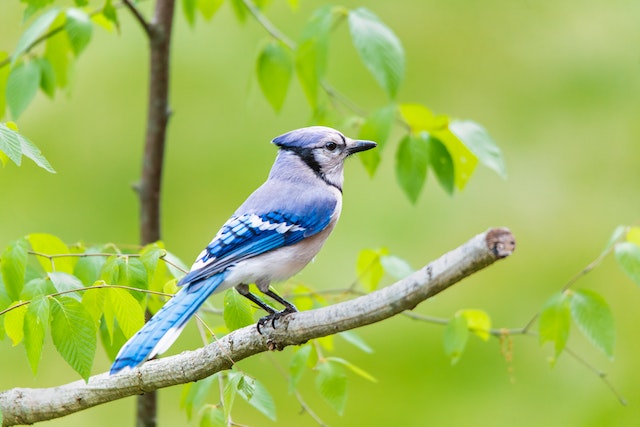
Blue jays use a variety of vocalizations to communicate. We can loosely categorize blue jay calls based on their cries’ tone quality, purpose, harmonics, and frequency range. First, blue jays frequently employ jeer cries to huddle their flocks together, especially when they perceive danger nearby. The range, frequency, and sound quality of jeers vary from bird to bird, although they are typically harsh and loud in tone. They emit loud, high-pitched cries known as “pump handle calls” when a low-level threat approaches. Blue jays also produce lower-frequency, gut-originating sounds during their intra-pair contact calls. These noises are typically made when a pair of blue jays is constructing a nest or searching for food.
Population
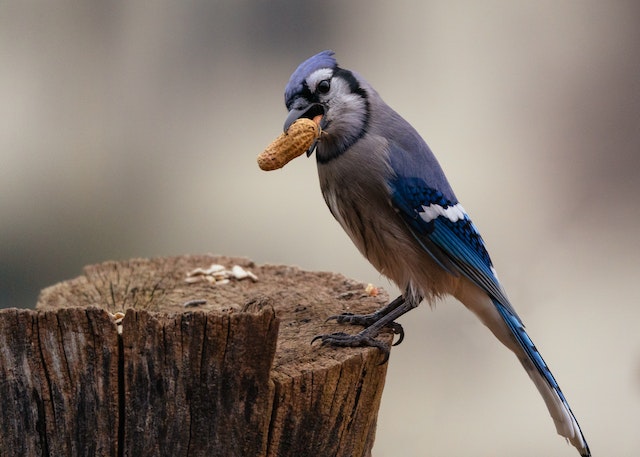
There are 22,000,000 blue jays in existence worldwide. The All About Birds resource estimates that the species has roughly 13 million breeding adults. Between 1966 and 2001, there was a dramatic 28 percent decline in the blue jay population.
Also Read: Facts About Peacocks for Kids
The Bottom Line
Over 13 million blue jays on planet earth reproduce, with 87 percent living in the United States and 13 percent in Canada. The attacks by cats and dogs are recognized as the leading cause of death. These birds are classified as Least Concern for conservation. If you enjoy bird watching, blue jays are definitely birds you want to keep an eye on!
Are you interested in more blue jay facts? Click here.
